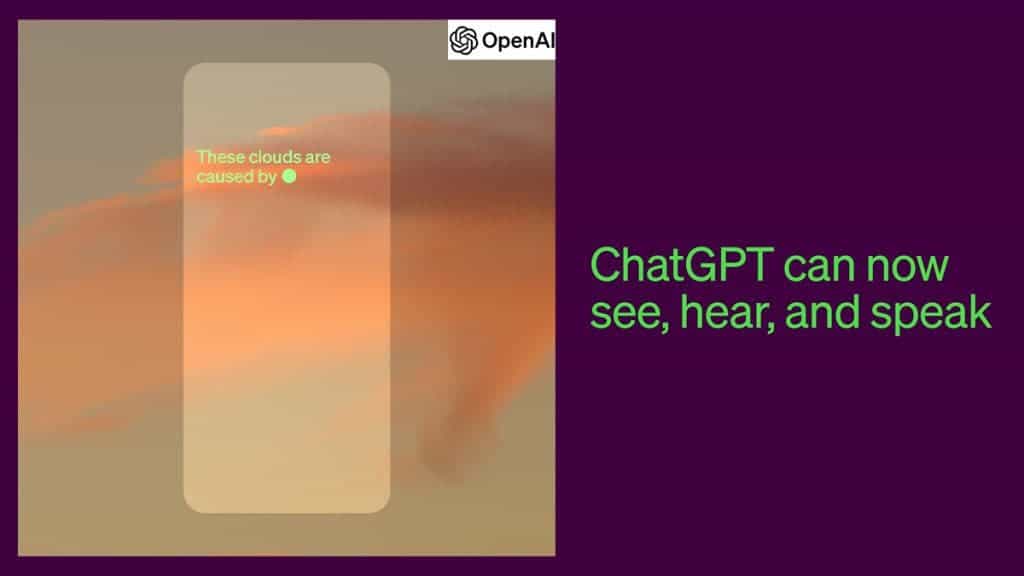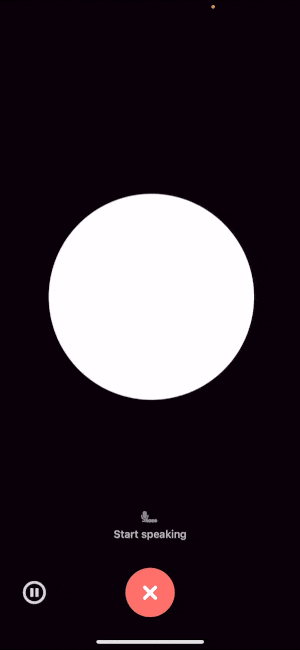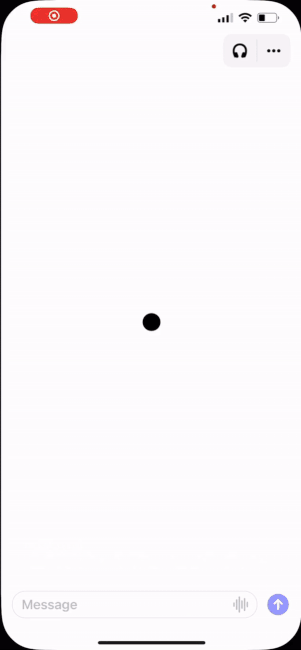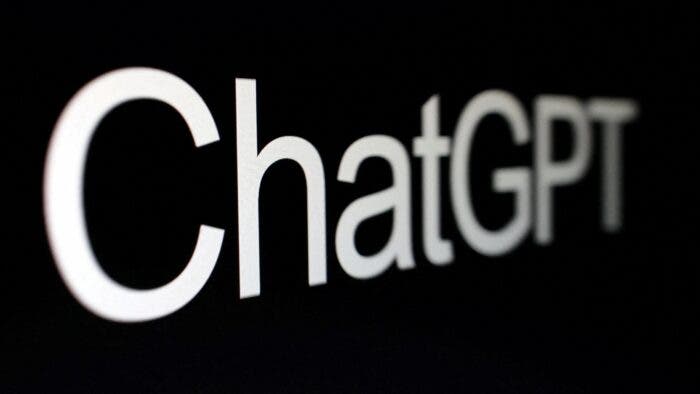OpenAI’s ChatGPT has unveiled voice and image functionalities, providing a more intuitive and engaging way for users to interact with the AI chatbot. These new features open up a world of possibilities for ChatGPT, from having natural conversations with users to helping them with visual tasks like analyzing images or drawings.
Voice and Image Functionalities in ChatGPT: A New Era of User-Friendly AI

Voice Conversations with ChatGPT
ChatGPT now allows users to have voice conversations with it. This is a significant step forward for the chatbot, as it allows for more natural and fluid interactions. Users can now simply speak to ChatGPT, and it will respond in real time.
To start a voice conversation with ChatGPT, users simply need to enable the feature in the mobile app’s Settings. Once enabled, users can select one of five different voices for ChatGPT.
ChatGPT uses a state-of-the-art text-to-speech model to generate lifelike audio. It also uses OpenAI’s Whisper speech recognition system to transcribe users’ words into text.
OpenAI has worked closely with professional voice actors to ensure that ChatGPT’s voice sounds natural and engaging. The company is also actively working to mitigate potential risks associated with voice conversations, such as impersonation and fraud.

Discussing Images with ChatGPT
ChatGPT can now also understand and discuss images. This means that users can share images with ChatGPT and ask it questions about them. ChatGPT can also help users to analyze graphs and charts.
To start a conversation about an image with ChatGPT, users simply need to tap the photo button or the plus button in the mobile app. ChatGPT can then discuss multiple images at the same time. Users can also use the drawing tool to highlight specific parts of an image.
ChatGPT uses a multimodal GPT-3.5 and GPT-4 model to understand images. This model applies language reasoning to a variety of images, including photos, screenshots, and documents.
OpenAI acknowledges that there are still some challenges associated with image understanding, such as misinterpretations. However, the company has conducted extensive testing to ensure that ChatGPT uses this feature responsibly.

Model Limitations
OpenAI acknowledges that ChatGPT is still under development and has some limitations. For example, the model may struggle with non-roman scripts. Therefore, non-English users are advised to use ChatGPT cautiously.
Additionally, ChatGPT is not intended to be in use in high-risk situations without verification. The model is best suited for specialized topics, such as customer service, education, and entertainment.
Availability
OpenAI is rolling out voice and image features for ChatGPT to Plus and Enterprise users in the next two weeks. These features will be available on iOS and Android through settings, and images will be accessible on all platforms.
OpenAI has plans to extend these capabilities to other user groups, including developers, in the near future.
The Future of Voice and Image Functionalities in ChatGPT
The addition of voice and image functionalities to ChatGPT is a major step forward for the AI chatbot. These features make ChatGPT more user-friendly and engaging, and they open up a world of new possibilities for its use.
In the future, we can expect to see ChatGPT used in a variety of new and innovative ways. For example, ChatGPT could be in use to develop new educational tools that help students learn visually. ChatGPT could also be in use to develop new customer service tools that provide more natural and engaging interactions.
OpenAI is committed to developing ChatGPT in a responsible way. The company is working to mitigate potential risks associated with voice and image functionalities, such as impersonation and fraud. OpenAI is also working to ensure that ChatGPT is in use in a fair and unbiased manner.
Overall, the addition of voice and image functionalities to ChatGPT is a positive development. These features make ChatGPT more user-friendly and engaging, and they open up a world of new possibilities for its use. OpenAI is committed to developing ChatGPT in a responsible way, and we can expect to see ChatGPT used in a variety of new and innovative ways in the future.
Here are some specific examples of how voice and image functionalities could be in use in ChatGPT:
- Education: ChatGPT could be used to develop new educational tools that help students learn visually. For example, ChatGPT could be in use to create interactive exercises that allow students to explore and learn about different topics. ChatGPT could also be in use to provide students with personalized feedback on their work.
- Customer service: ChatGPT could be in use to develop new customer service tools that provide more natural and engaging interactions. For example, ChatGPT could be in use to create chatbots that can answer customer questions in a natural and engaging way, and that can provide personalized assistance to customers. ChatGPT could also be in use to develop chatbots that can help customers to troubleshoot problems, to find the information they need, and to make purchases.
- Healthcare: ChatGPT could be in use to develop new healthcare tools that help patients and doctors to communicate more effectively. ChatGPT could also be in use to develop chatbots that can help doctors to diagnose diseases and to develop treatment plans.
- Entertainment: ChatGPT could be used to develop new entertainment experiences that are more immersive and engaging. For example, ChatGPT could be in use to create chatbots that can act as characters in video games or movies. ChatGPT could also be in use to develop chatbots that can generate personalized stories or poems.
Other applications: ChatGPT could also be in use in a variety of other applications, such as:
- Research: ChatGPT could be in use to help researchers to analyze data and to generate new hypotheses.
- Marketing: ChatGPT could be in use to create personalized marketing campaigns and to target customers with relevant products and services.
- Productivity: ChatGPT could be in use to develop tools that help people to be more productive, such as chatbots that can help people to manage their schedules or to take notes.
The possibilities are endless. With the addition of voice and image functionalities, ChatGPT is now more versatile and powerful than ever before. It will be exciting to see how ChatGPT is in use in new and innovative ways in the future.
Challenges and limitations
Despite the many potential applications of voice and image functionalities in ChatGPT, there are also some challenges and limitations that need to be addressed.
One challenge is that voice and image recognition systems can be inaccurate, especially in noisy or poorly lit environments. This could lead to ChatGPT misunderstanding users’ requests or providing incorrect information.
Another challenge is that ChatGPT is still under development, and it may not be able to understand or respond to all prompts or questions correctly. Additionally, ChatGPT may be biased in its responses, reflecting the biases that are present in the data that it was trained on.
Conclusion
Despite the challenges, the addition of voice and image functionalities to ChatGPT is a positive development. These features make ChatGPT more user-friendly and engaging, and they open up a world of new possibilities for its use.
OpenAI is committed to developing ChatGPT in a responsible way. The company is working to mitigate potential risks associated with voice and image functionalities, such as impersonation and fraud. OpenAI is also working to ensure that ChatGPT is in use in a fair and unbiased manner.
Overall, the future of voice and image functionalities in ChatGPT is bright. We can expect to see ChatGPT used in a variety of new and innovative ways in the years to come.





